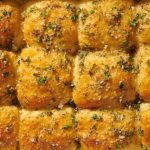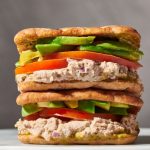I've been perfecting this technique for decades.
My ideal scrambled eggs are well-seasoned, light, and super fluffy, with no browned spots. I take this very seriously, because breakfast is by far my favorite meal of the day. The eggs, the cheese, the bacon, the hash browns, the quesadilla breakfast tacos, the avocado toast, the ability to exercise my culinary muscles for the first meal of the day; it just does it for me. So when I tell you that I’ve spent the majority of my life perfecting the technique for my favorite dish—fluffy scrambled eggs—so you don’t have to, I’m not being hyperbolic.
My Scrambled Egg Journey
I've been making scrambled eggs since I was 12. My first foray into eggs didn’t turn out as well as I had anticipated. I initially tried making a fried egg, thinking it would be easy-peasy-lemon-squeezy, but it quickly turned into a scrambled egg with crisped-up edges and brown spots, becoming more stressy-depressy-lemon-zesty. As did my subsequent attempts. Womp womp.
If scrambled eggs were to be my outcome, I decided to go with it from the onset. I grabbed a cereal bowl, a fork, milk, and eggs, and got to it. I used my mom’s technique of scrambling the egg and the milk in a bowl with a fork. I then poured the scrambled ingredients into a small pan over high heat (because I was an impatient child) and started cooking them, making sure to stir the eggs the entire time they cooked (because I don’t like to sit still). Success! The eggs didn’t turn out half bad.
Over the next 24 years, I honed my scrambled egg craft. I removed the addition of the milk, found a nonstick skillet to be the best cookware companion for this endeavor, and learned that a good high-heat silicone spatula was my bff in the kitchen. Even my chef instructor at culinary school was impressed with the outcome of this technique. Telling me that he’d never had such fluffy, well-scrambled eggs—and he was a brunch chef for over a decade!
So, when a friend a few years back responded to a Reel I created for work, where I claimed the fork method was the BEST technique for making fluffy scrambled eggs, asking if I’d ever used a blender to scramble my eggs, I had to give it a go! I mean, if egg whites can become these voluminous clouds when beaten together for uses like icing and soufflés, why couldn’t a blender create a similar airy texture for egg whites and yolks? I whipped out my Ninja Nutri Pro blender and gave it a try.
The Best Method for Fluffy Scrambled Eggs: A Blender
Let me tell you, the blender method far surpassed my expectations. Using the Ninja Nutri Pro blender turned the eggs into fluffy little pillows made from veritable clouds. The texture was light, almost like a soufflé, and much more billowy than the results of the fork technique.
To this day, using this blender to whip together my eggs is my preferred method for making the fluffiest scrambled eggs. If I’m in a pinch—traveling or haven’t washed my blender pieces—I still fall back on the fork technique. But I can confidently say that the blender is truly the BEST method for making the fluffiest scrambled eggs of your life.
Why It Works
The blender aerates the eggs. Similar to how when a baker beats egg whites to add air and create soft or stiff peaks, the blender adds air to the scrambled egg mixture which in turn creates more lift and volume. This lift and volume then translates into the cooked dish, leaving you with pillowy eggs that are just heavenly.
My 3 Key Takeaways for Making Fluffy Scrambled Eggs
If I were to impart three gems of wisdom to you on your own fluffy scrambled egg journey, they would be this:
- Use a blender: Not only will the blender mix your raw eggs more evenly, but it will also aerate them, giving them a fluffy texture when cooked. I can’t recommend the Ninja Nutri Pro blender enough—I use it for everything from scrambling eggs to making protein shakes to puréeing hot soups. It’s compact, fast, leak-proof, and dishwasher safe. What’s not to love!
- Use a nonstick skillet: Take it from someone who learned the hard way. Use. The. Nonstick. Skillet. There’s a coating on the nonstick skillet that allows for easier release of the food from the pan. That way you don’t destroy your end product or end up having to soak your pan for several days because the eggs decided to bond with the mighty power of Thor. You’re still using some sort of fat when cooking eggs (e.g. butter, margarine, oil), but this coating helps reduce the chance of… well… sticking. If you don’t have a nonstick skillet, I highly recommend investing in one. Not sure where to start? We’ve done the legwork so you don’t have to and tested and reviewed our top favorite nonstick skillets. Treat yo self.
- Do NOT let the eggs sit: You might be tempted to pour your eggs into the pan and walk away for a moment, but don’t do it. They brown on the bottom and create a skin which should NOT be happening with a fluffy scrambled egg situation. Instead, using a high-heat silicone spatula, continuously stir the eggs as they cook. (This will take less than three minutes. I promise you that you can stand in front of the stove for three minutes.) This will ensure that no skin forms on the bottom of the eggs, that they cook more evenly, and that they cook faster. Lord knows I’m an impatient person, so anything that I can do efficiently AND fast is best.


